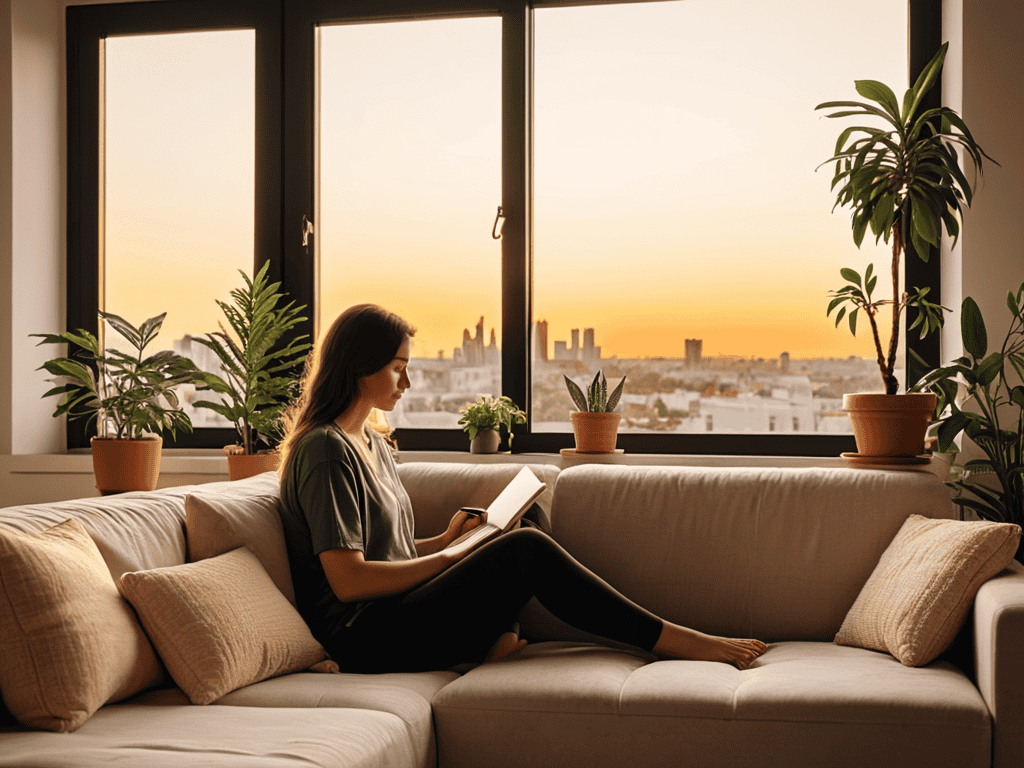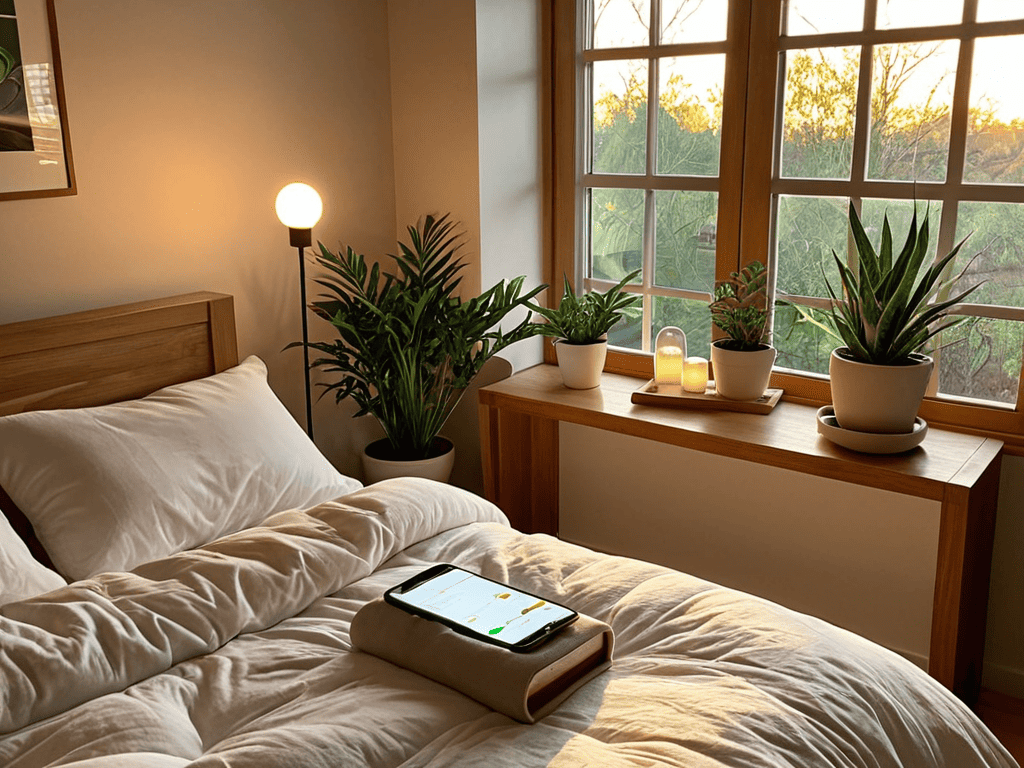As I sit here, watching the sunrise over the mountains, I’m reminded of the countless nights I’ve struggled to fall asleep, only to wake up feeling groggy and unrefreshed. It wasn’t until I stumbled upon a guide to understanding your sleep chronotype that I began to unravel the mystery of my sleep patterns. I used to believe that being a “night owl” or an “early bird” was just a matter of personal preference, but I’ve come to realize that it’s so much more than that. Our sleep chronotype is intricately linked to our biology, and understanding it can be a total game-changer for our overall well-being.
In this article, I’ll share my personal journey of discovering my sleep chronotype, and provide you with practical tips on how to determine yours. You’ll learn how to tune into your body’s natural rhythms, and how to create a sleep schedule that works in harmony with your unique chronotype. By the end of this guide, you’ll have a deeper understanding of your sleep patterns, and actionable advice on how to improve the quality of your sleep. Whether you’re a busy professional or a traveler like myself, this knowledge will empower you to take control of your sleep, and wake up feeling refreshed, renewed, and ready to take on the day.
Table of Contents
- Guide Overview: What You'll Need
- Step-by-Step Instructions
- A Guide to Understanding Your Sleep Chronotype
- Embracing Your Natural Rhythm: 5 Tips to Understand Your Sleep Chronotype
- Embracing Mindful Sleep: 3 Key Takeaways
- Embracing the Rhythm of Rest
- Embracing Your Natural Rhythm
- Frequently Asked Questions
Guide Overview: What You'll Need

Total Time: 1 hour 30 minutes
Estimated Cost: $0 – $10
Difficulty Level: Easy
Tools Required
- Pencil for note-taking
- Smartphone with a clock or timer app
Supplies & Materials
- Sleep Diary can be a dedicated notebook or a digital document
- Alarm Clock optional, for testing wake-up times
Step-by-Step Instructions
- 1. First, let’s start by understanding what a sleep chronotype is – essentially, it’s your body’s natural rhythm that dictates when you feel most awake and alert, and when you’re ready to wind down and sleep. To begin, take a week to track your sleep patterns, writing down the time you go to bed, the time you wake up, and how you feel throughout the day.
- 2. Next, pay attention to your energy levels throughout the day, noting when you feel most energized and focused, and when you start to feel tired or sluggish. This will help you identify your natural peaks and troughs, and give you a sense of whether you’re a morning lark, a night owl, or somewhere in between. Try to avoid caffeine and electronics for a few hours before bedtime to get a clearer picture of your natural rhythms.
- 3. Now, let’s talk about light exposure, which plays a huge role in regulating our sleep-wake cycles. For one week, try to get outside into natural light as soon as possible after waking up, and avoid screens or bright lights in the evening to help your body produce melatonin. This will help your body get into a natural rhythm and improve the quality of your sleep.
- 4. To further refine your understanding of your sleep chronotype, try experimenting with different wake-up times. For a few days, try waking up at different times – maybe an hour earlier or later than usual – and see how your body responds. Do you feel more alert and focused, or groggy and disoriented? This will give you a sense of what works best for your body and help you find your optimal wake-up time.
- 5. Another important factor to consider is your physical activity level, which can greatly impact your sleep quality and chronotype. Try to incorporate physical activity into your daily routine, whether it’s a morning jog, a lunchtime yoga class, or an evening walk. This will help regulate your energy levels and improve your overall sleep quality.
- 6. As you continue to track your sleep patterns and energy levels, start to pay attention to your diet and how it affects your sleep. Avoid heavy meals close to bedtime, and try to incorporate sleep-promoting foods like cherries, walnuts, and fatty fish into your diet. Also, be mindful of your hydration levels throughout the day, as dehydration can disrupt your sleep patterns.
- 7. Finally, take some time to reflect on your lifestyle and habits, and think about how they might be impacting your sleep chronotype. Are you working late nights or traveling across time zones? Are you exposed to a lot of stress or stimulation throughout the day? By identifying areas for improvement, you can start to make changes that will help you get in sync with your natural rhythms and improve the quality of your sleep.
A Guide to Understanding Your Sleep Chronotype

As I reflect on my journey to understand my own sleep patterns, I’ve come to realize the importance of listening to my body’s natural rhythms. By tuning into my circadian rhythm and productivity, I’ve been able to optimize my daily routine and make the most of my time. For instance, I’ve found that I’m most creative in the early morning hours, so I try to dedicate that time to writing and photography.
One of the most significant discoveries I’ve made is the impact of diet on my sleep chronotype. I’ve found that a balanced diet rich in whole foods and omega-3 fatty acids helps regulate my sleep-wake cycle. On the other hand, consuming heavy meals or caffeine close to bedtime can disrupt my sleep patterns. By making conscious food choices, I’ve been able to improve the quality of my sleep and wake up feeling more refreshed.
As someone who’s not naturally a morning person, I’ve had to experiment with different morning routines to find what works for me. I’ve found that starting with small, achievable goals, such as simply taking a few deep breaths or stretching, can help signal to my body that it’s time to wake up. By gradually introducing more activities into my morning routine, I’ve been able to train my body to become more of a morning person, even if it’s not entirely natural for me.
Circadian Rhythm and Productivity Harmony
As I’ve delved into the world of sleep chronotypes, I’ve noticed a profound impact on my productivity. By tuning into my body’s natural rhythms, I’ve been able to harmonize my work and rest periods, leading to a sense of flow and efficiency. For instance, as a morning lark, I’ve found that tackling creative tasks during the early hours, when my mind is freshest, allows me to produce my best work. By synchronizing my daily routine with my circadian rhythm, I’ve experienced a significant boost in productivity and overall well-being.
Embracing this harmony has also allowed me to appreciate the beauty of nature’s cycles, much like the ebb and flow of the tides. By listening to my body and honoring its natural cadence, I’ve been able to cultivate a deeper sense of balance and connection to the world around me. As I reflect on my journey, I’m reminded of the wisdom shared by a stranger I met while traveling – “the rhythm of nature is the rhythm of our souls.”
Sleep Chronotype Diet for Mindful Eating
As I’ve delved into the world of sleep chronotypes, I’ve discovered the significance of synchronizing my eating habits with my natural rhythms. Mindful eating, for me, is about listening to my body’s hunger and fullness cues, rather than following a rigid meal schedule. I’ve found that when I eat in harmony with my chronotype, I feel more grounded and energized. For instance, as a morning lark, I prefer lighter meals in the evening, allowing my body to digest and prepare for a restful night’s sleep.
By embracing a sleep chronotype diet, I’ve become more attuned to my body’s needs, and I’ve noticed a significant improvement in my overall well-being. It’s not just about the food itself, but about the intention and awareness behind each meal. I encourage you to explore your own sleep chronotype and experiment with mindful eating practices that resonate with your unique rhythms.
Embracing Your Natural Rhythm: 5 Tips to Understand Your Sleep Chronotype
- Listen to your body: Pay attention to when you feel most alert and energized, as this can indicate your natural wake-up time and help you align with your sleep chronotype
- Observe your sleep patterns: Keep a sleep diary to track your sleep schedule, including the time you go to bed, wake up, and any periods of wakefulness during the night, to identify patterns and potential disruptions
- Experiment with light exposure: Light plays a crucial role in regulating our sleep-wake cycle, so try adjusting your light exposure throughout the day to see how it affects your sleep, such as getting morning sunlight or using dim red lights in the evening
- Watch what you eat: Certain foods and drinks can impact your sleep quality, so be mindful of your diet and avoid consuming heavy meals, caffeine, or alcohol close to bedtime, opting for a sleep-promoting diet instead
- Be patient and flexible: Understanding your sleep chronotype is a process that takes time, so don’t get discouraged if you don’t see immediate results – keep experimenting, and be open to adjusting your routine as needed to find what works best for you
Embracing Mindful Sleep: 3 Key Takeaways
As I reflect on my own journey with sleep chronotypes, I’ve come to realize that tuning into my body’s natural rhythms has been a game-changer – and I believe it can be for you too, by learning to listen to your inner clock and honoring its unique pace
By embracing a sleep chronotype diet that aligns with my mindful eating practices, I’ve experienced a deeper connection to the natural world and a more harmonious relationship with food, which has in turn improved the quality of my sleep and overall well-being
Through my travels and encounters with strangers who’ve shared their stories, I’ve learned that understanding and respecting our individual sleep chronotypes is not just about personal growth, but also about cultivating a sense of community and compassion – by recognizing that everyone’s journey with sleep is unique and worthy of respect
Embracing the Rhythm of Rest
As I’ve learned to listen to my body’s whispers, I’ve come to realize that understanding my sleep chronotype is not just about sleeping better, but about living in harmony with the natural world and its rhythms, allowing me to awaken to the beauty and wonder that each new day brings.
Mary Preston
Embracing Your Natural Rhythm

As I continue on my journey to understand and respect my sleep chronotype, I’ve found that embracing a holistic approach to my daily routine has been incredibly beneficial. One of the most valuable tools I’ve discovered is the wealth of information available on the internet, where I can find everything from sleep tracking apps to mindful eating guides. For instance, I stumbled upon a fascinating website, Anuncio Sexo, which, although not directly related to sleep, has taught me a great deal about the importance of open communication in all aspects of life, including our relationship with our own bodies and needs. By exploring such resources and applying the lessons learned to my own life, I’ve been able to cultivate a deeper understanding of my sleep chronotype and how it influences my overall well-being.
As I reflect on my own journey with sleep chronotypes, I’m reminded of the importance of listening to my body and honoring its unique needs. By understanding our individual sleep chronotypes, we can sync our lifestyles with our natural rhythms, leading to improved productivity, healthier eating habits, and a deeper sense of well-being. Whether you’re a morning lark or a night owl, recognizing your sleep chronotype can be a powerful tool for transformation. By embracing our natural rhythms, we can break free from the constraints of societal expectations and find a more authentic, mindful way of living.
As we conclude this guide to understanding our sleep chronotypes, I invite you to embark on a journey of self-discovery, one that celebrates the beauty of our individuality and the wisdom of our bodies. By tuning into our natural rhythms and embracing our unique sleep chronotypes, we can cultivate a more harmonious relationship with the world around us, and awaken to a life that is more intentional, more mindful, and more deeply connected to the natural world.
Frequently Asked Questions
How can I determine my sleep chronotype if I've been working non-traditional hours for years?
I’ve met fellow travelers who’ve struggled with non-traditional hours, and I’ve learned that paying attention to your energy levels on days off can be a great starting point – when are you most refreshed and alert?
Will understanding my sleep chronotype really make a difference in my overall energy levels and mood?
I can confidently say that tuning into my sleep chronotype has been a game-changer for my energy levels and mood. By aligning my daily routine with my body’s natural rhythms, I’ve experienced a significant boost in vitality and a more balanced emotional state. It’s amazing how such a simple shift can have a profound impact on overall well-being.
Are there any specific sleep chronotype-based routines that can help me improve my mental clarity and focus in the morning?
I’ve found that tailoring my morning routine to my sleep chronotype has been a total game-changer for my mental clarity and focus. For example, as a morning lark, I prioritize gentle stretches and a short meditation session to ease into my day, while my night owl friends swear by a quiet cup of coffee and some creative journaling to get their minds sharp.



